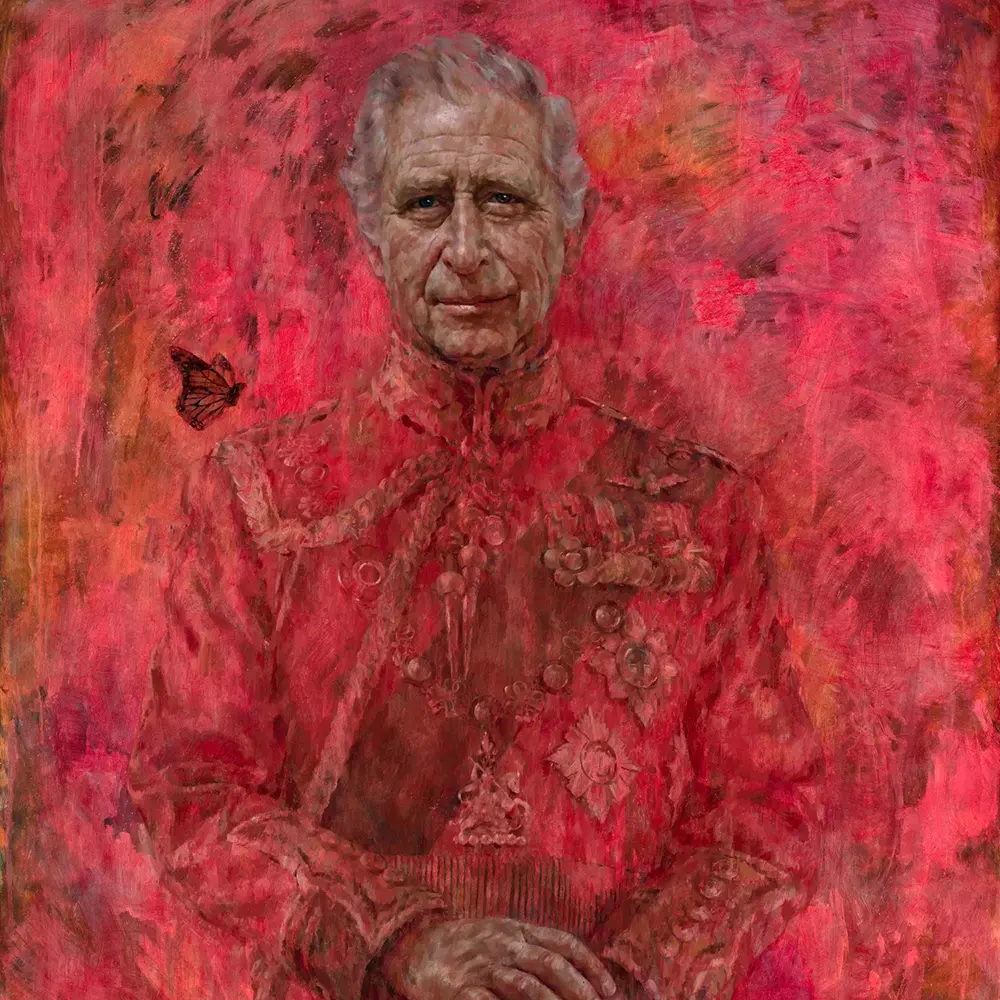Jonathan Yeo’s portrait of King Charles III aims to capture the significance of the monarch’s position and the hidden complexities of his life story. Strikingly contemporary, the bold color scheme has been both praised as daring and criticized as polarizing.
The portrait’s debut at Buckingham Palace demonstrated Yeo’s skill at portraying his subjects’ inner depth as well as their outside regality. Charles is seen in the artwork, which was commissioned by the Worshipful Company of Drapers, against an ethereal, blood-red background while wearing a military uniform.
The use of the red background has generated a lot of controversies; some regard it as a striking break from the more somber tones often associated with royal portraits, while others see it as a symbol of the king’s strong support for environmental concerns.
Yeo’s work has been criticized by The Guardian as “facile flattery,” arguing that it falls short of capturing King Charles’s actual personality and instead reduces him to a symbol of artistic trends. According to this viewpoint, the artwork lacks the gravity and deference that are usually accorded to rulers in such representations.
Supporters argue that Yeo’s style humanizes the monarch and adds a welcome contemporary touch, portraying him as a strong man despite his elderly age and recent health issues. Yeo’s artistic decisions are greatly influenced by his life journey. Having survived a heart attack that almost killed him, he has a special kind of empathy with Charles, who has just experienced health problems of his own. The portrait gently captures this common fragility and resilience via his manner of regal authority mixed with a hint of reflection.
Another noteworthy aspect of Yeo’s work is its historical setting. Yeo, a renowned portraitist esteemed for his portrayals of notable individuals spanning from politicians to celebrities, offers an abundance of expertise to this project. His earlier paintings, which are renowned for their capacity to capture the essence of the sitter, seem to have been purposefully chosen to depict Charles not just as a king but also as a man molded by years of public duty and personal challenges.
Yeo’s portrait combines conventional emblems of authority with current aesthetic sensibilities. It undoubtedly gives the visual heritage of the British monarchy a new dimension, even though it has generated discussion and criticism.



